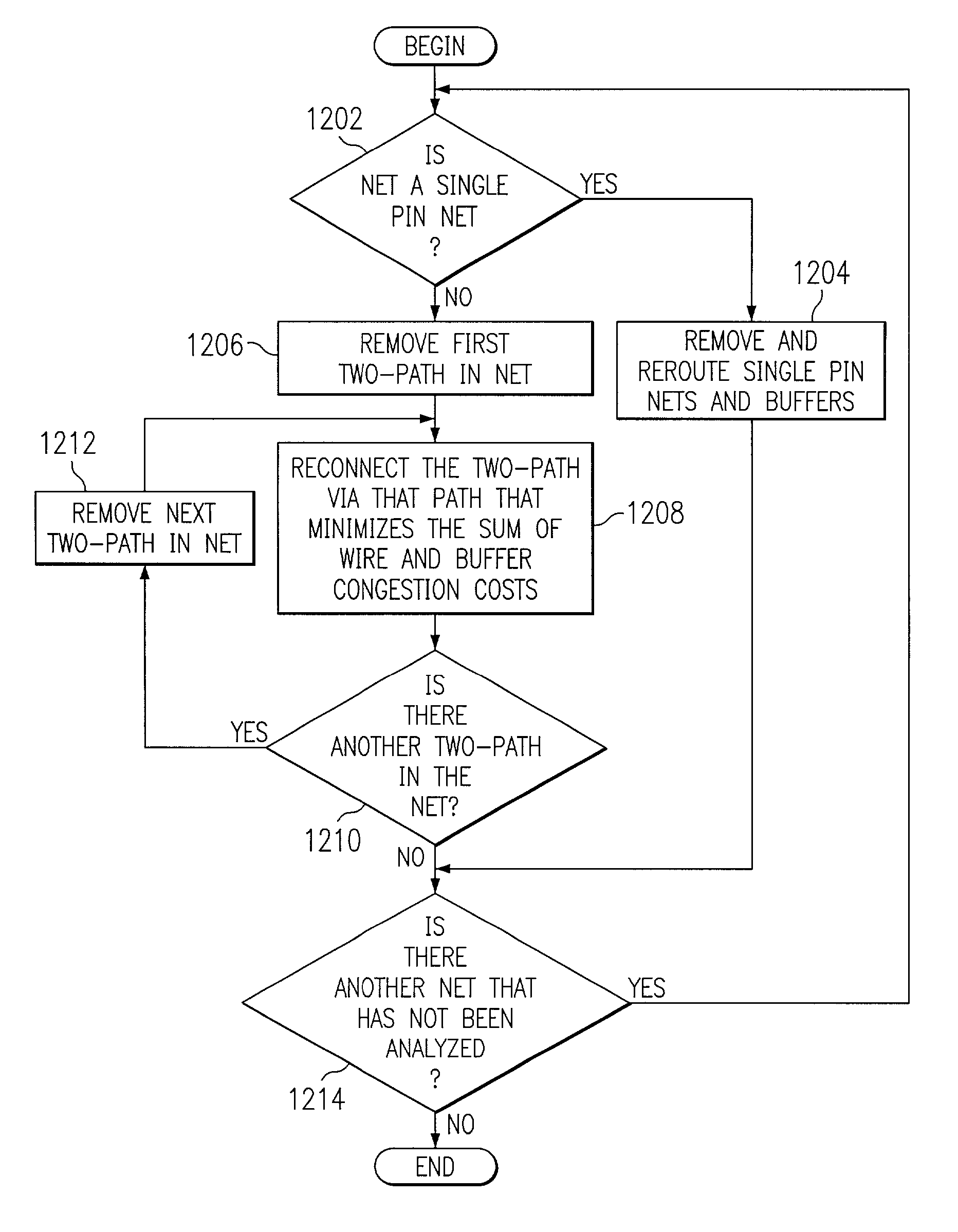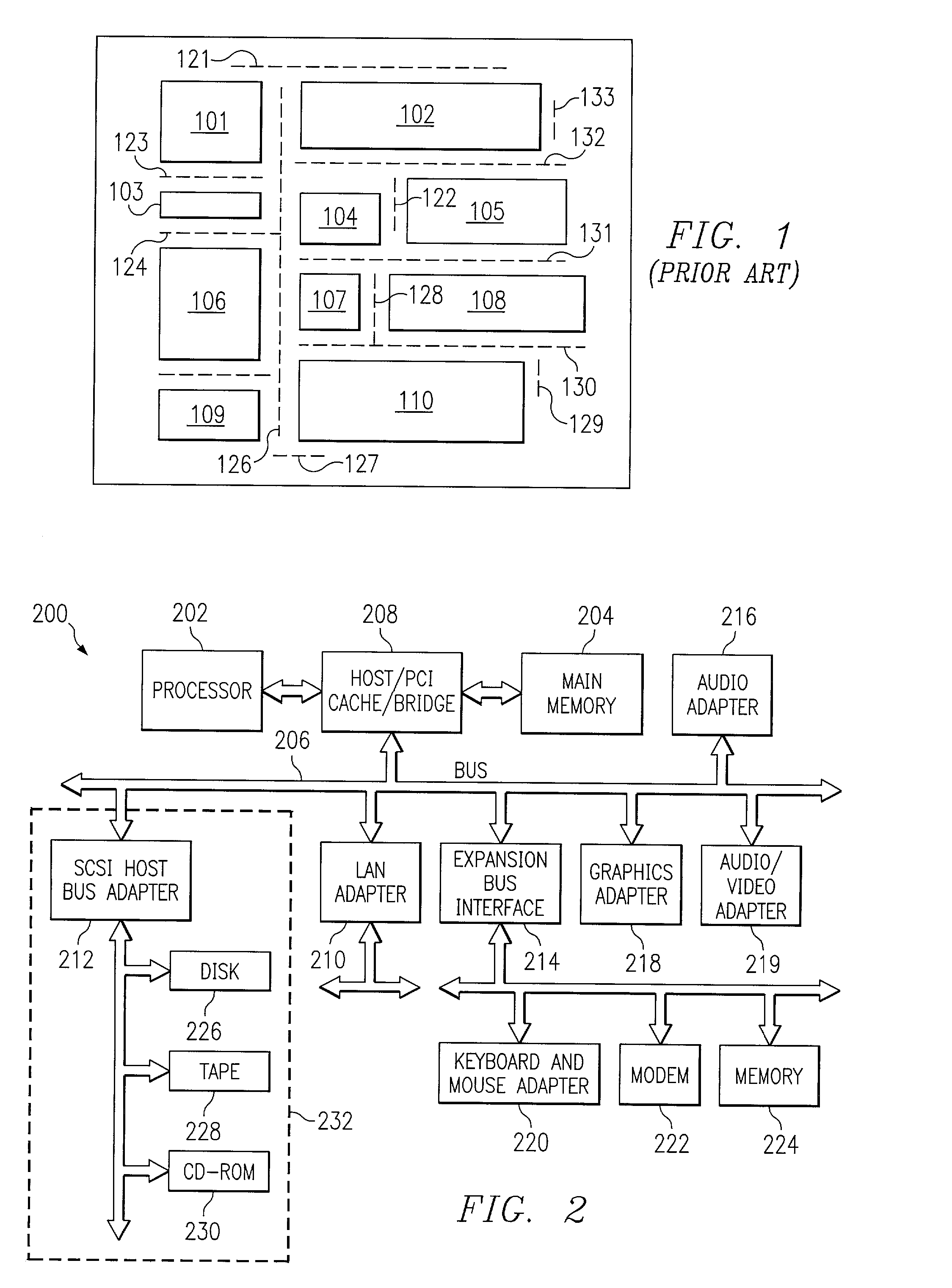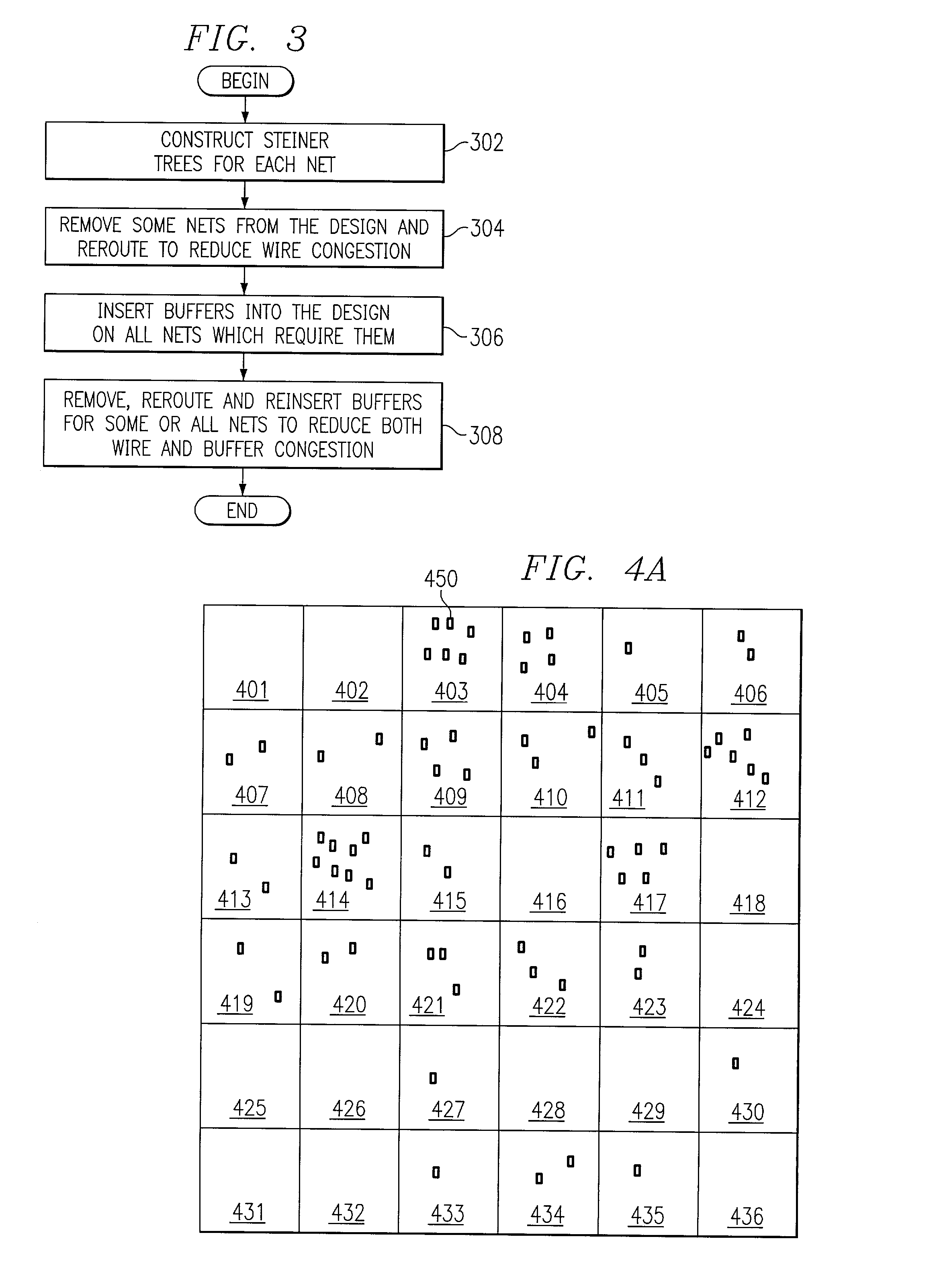Practical methodology for early buffer and wire resource allocation
a technology of wire resource allocation and early buffer placement, which is applied in the field of early buffer placement in an integrated circuit, can solve the problems of affecting affecting the design of application specific integrated circuits (asics), and affecting the timing of the timing closure process,
- Summary
- Abstract
- Description
- Claims
- Application Information
AI Technical Summary
Benefits of technology
Problems solved by technology
Method used
Image
Examples
Embodiment Construction
[0028]With reference now to FIG. 2, a block diagram illustrating a data processing system is depicted in which the present invention may be implemented. Data processing system 200 is an example of a data processing system that may be used to implement a computer program product for designing buffer block placement in an integrated circuit chip in accordance with the present invention. Data processing system 200 employs a peripheral component interconnect (PCI) local bus architecture. Although the depicted example employs a PCI bus, other bus architectures such as Accelerated Graphics Port (AGP) and Industry Standard Architecture (ISA) may be used. Processor 202 and main memory 204 are connected to PCI local bus 206 through PCI bridge 208. PCI bridge 208 also may include an integrated memory controller and cache memory for processor 202. Additional connections to PCI local bus 206 may be made through direct component interconnection or through add-in boards.
[0029]In the depicted exam...
PUM
 Login to View More
Login to View More Abstract
Description
Claims
Application Information
 Login to View More
Login to View More - R&D
- Intellectual Property
- Life Sciences
- Materials
- Tech Scout
- Unparalleled Data Quality
- Higher Quality Content
- 60% Fewer Hallucinations
Browse by: Latest US Patents, China's latest patents, Technical Efficacy Thesaurus, Application Domain, Technology Topic, Popular Technical Reports.
© 2025 PatSnap. All rights reserved.Legal|Privacy policy|Modern Slavery Act Transparency Statement|Sitemap|About US| Contact US: help@patsnap.com



